When I think of my childhood garden, I vividly remember a row of roses in pink and yellow. I loved those roses dearly and would stare at them, taking in their sweet scent every time I passed that spot in the yard. In another spot, there was a lovely green trellis with roses climbing up both sides. With time, my Dad seemed to have forgotten about these roses, but I would dutifully put new stems through the trellis, guiding them upwards, because I was committed to the vision.
When I finally got my own yard to plant my own garden, I remember asking with wide eyes what roses I could plant and how many and where they would work in my yard, only to be met with the words, “Kristen, don’t bother with roses. They’re so difficult to maintain, and they always die. It’s just a waste of your money.”
To be fair, these words were true and said with much love.
But somehow, I needed roses in my life. Even if they were just the basic pink or yellow rose bushes that seemed to be the only thing anyone ever grew in the 90s.
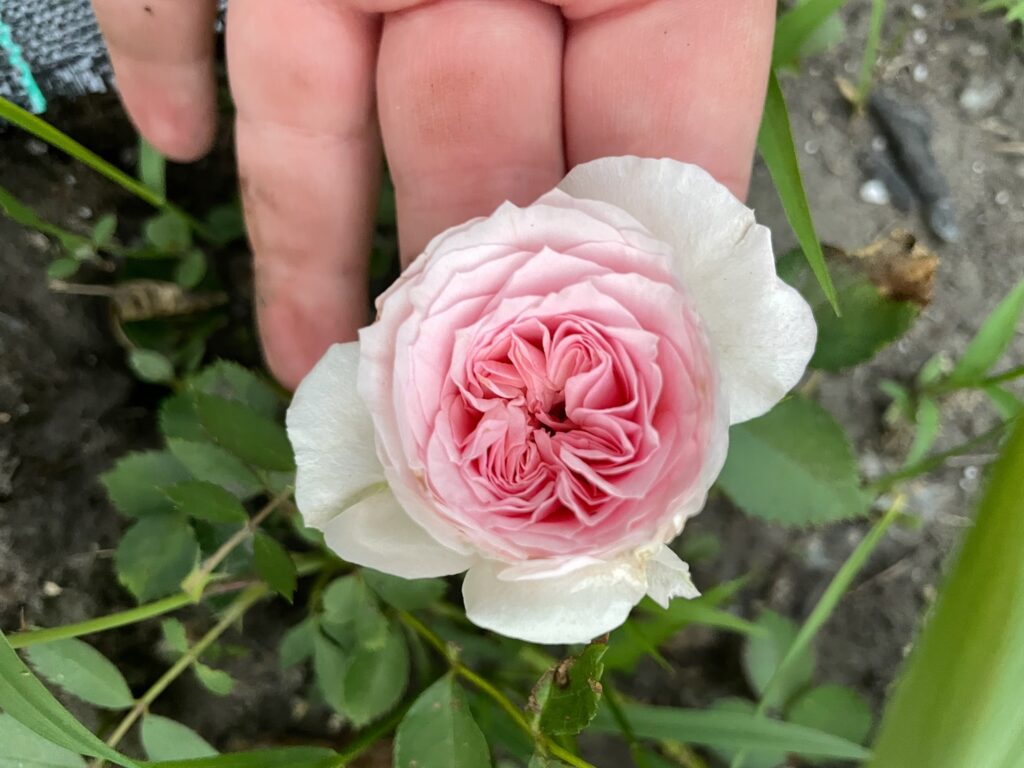
Disclaimer: This post contains affiliate links, which means that I make a small commission if you purchase anything, at no extra cost to you. You can read more about it in my Privacy Policy. Thank you for supporting Shifting Roots!
The challenges of growing roses in Zone 3
Many beginner gardeners will be called in by the siren song of full-blooming roses, thinking that’s what they’ll get, only to be met with crushing disappointment the next spring. Cold climate gardeners must ensure they don’t buy the rose varieties at big box stores. While these stores likely have some hardy roses, most big box varieties won’t survive the winter in a cold climate.
Furthermore, you may scroll on Pinterest or see other gardeners in warmer zones with their David Austin tea roses (these gorgeous and frilly things that come in the most beautiful, desirable colours imaginable) and nearly drool and say, “Take all my money!” only to realize they won’t survive in your cold climate. The sorrow is vast.
While you can’t have any of those roses I just mentioned, dry your eyes, as there are some beautiful varieties that you can have! As of 2024, Canadian growers can purchase over 900 gorgeous varieties of own-root roses from Heirloom Roses.
Head to the Heirloom Roses website and order the varieties of your dreams today. While Zone 3 gardeners might not be able to grow David Austin roses, there are still pages and pages of dreamy varieties to choose from (plus, you can filter the varieties by zone to ensure you get the best roses for your climate!). Use the code ROOTS20 for 20% off your purchase!
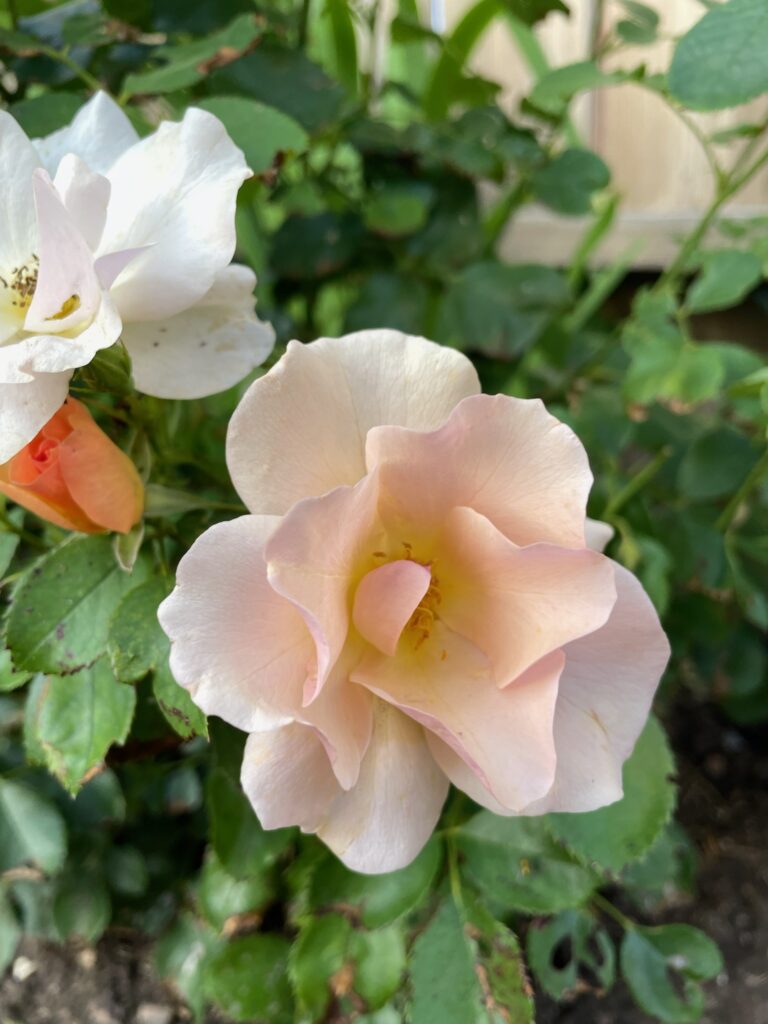
Do roses grow well in Canada?
Whether roses grow well in Canada depends entirely on the variety of roses you plant! While there are probably some roses I’ll miss in this list, when shopping at the nursery, you’re looking for two different series of rose varieties: anything in the Morden series and anything in a Canadian series, like 49th Parallel, Canadian Artist, or Explorer. While these might not be tea roses, they’re prettier than you think. The varieties listed below are good options if you want roses to grow in Canada!
Cold Hardy Rose Varieties
- Morden Blush
- Campfire
- At Last
- Olds College
- Persian Yellow
How to Grow Roses in a Cold Climate
As long as you pick cold hardy rose varieties, cold-climate growers should have little difficulty growing roses. Canadian-developed roses are best for short-season gardeners like me in Zone 3, as they are built to last through the harsh winters. When planting your roses, ensure they’re in a spot that receives at least six hours of sun daily. Well-drained soil packed with organic matter will also help your roses thrive.
To winterize cold hardy rose varieties, mound the soil around the plant’s base for the first couple of years after planting. If you are a prairie gardener, April is the best month to plant your roses. Other growers across Canada should be able to get away with spring planting in April or fall planting in September.
For more tips about how to care for cold hardy roses, check out www.canadianrosesociety.org.
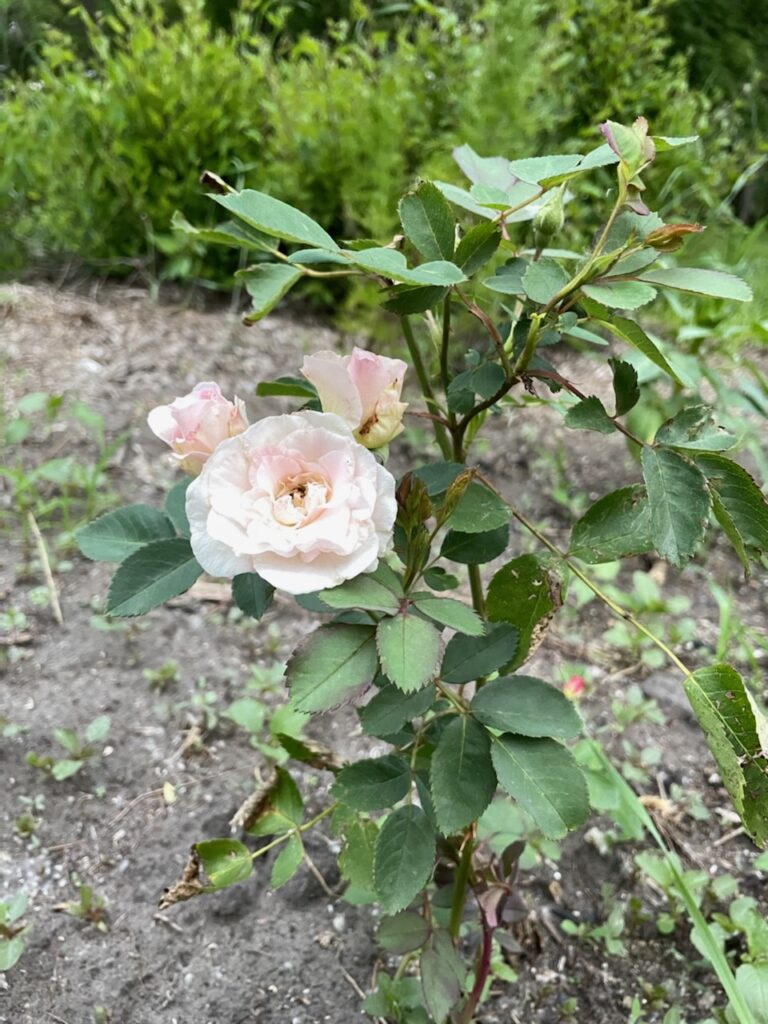
How to Know If Your Rose Is Alive In the Spring
If your roses don’t come back, here’s what to do before you call them dead: cut them back “hard” (meaning to cut them quite close to the ground). Nothing will happen if that rose shows no signs of life by July 15th. The rose is dead. I was pleasantly surprised to find that my Morden rose bushes had come to life in early May! At the time of writing this blog post, they are coming up quite nicely.
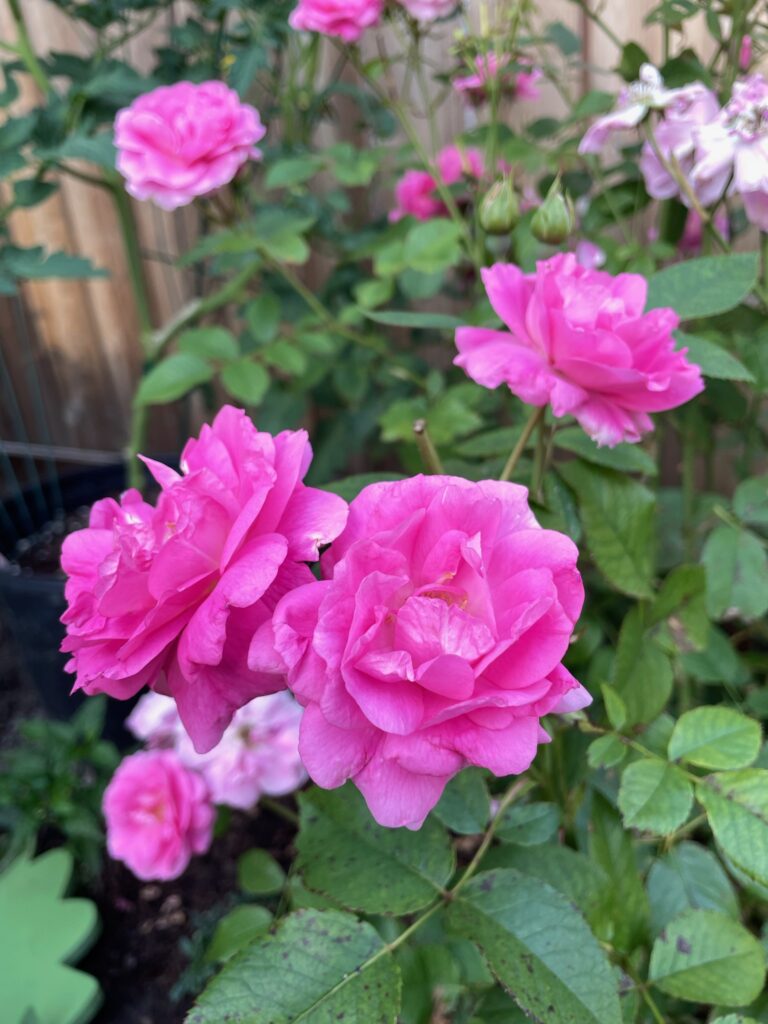
Canadian Rose Pruning Tips
Older rose bushes should be pruned once they show signs of growth (sometime in April), whereas newer rose bushes should be cut back hard in spring, regardless of signs of growth. Make sure you use sharp pruning shears!
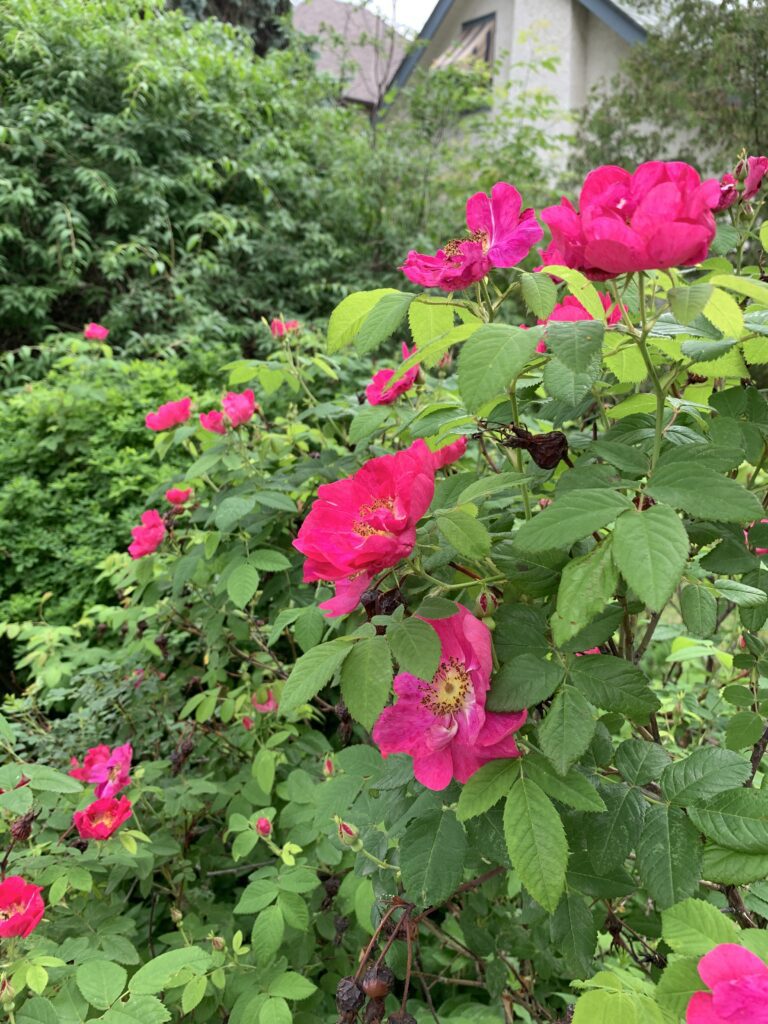
Where to Buy cold hardy roses
While it is best to buy roses at your locally owned gardening centres, these seed companies carry beautiful rose varieties for cold climate growers:
- Heirloom Roses
- Morden Nurseries – if you’re willing to drive to Stanley, Manitoba
- Corn Hill Nursery
- Palatine Roses
- T&T Seeds
The Morden Nurseries website is very helpful for seeing all the different cold-hardy varieties that exist, even if you’re too far away to drive to Manitoba to buy some. (Shipping is currently unavailable at the time of writing this blog.)
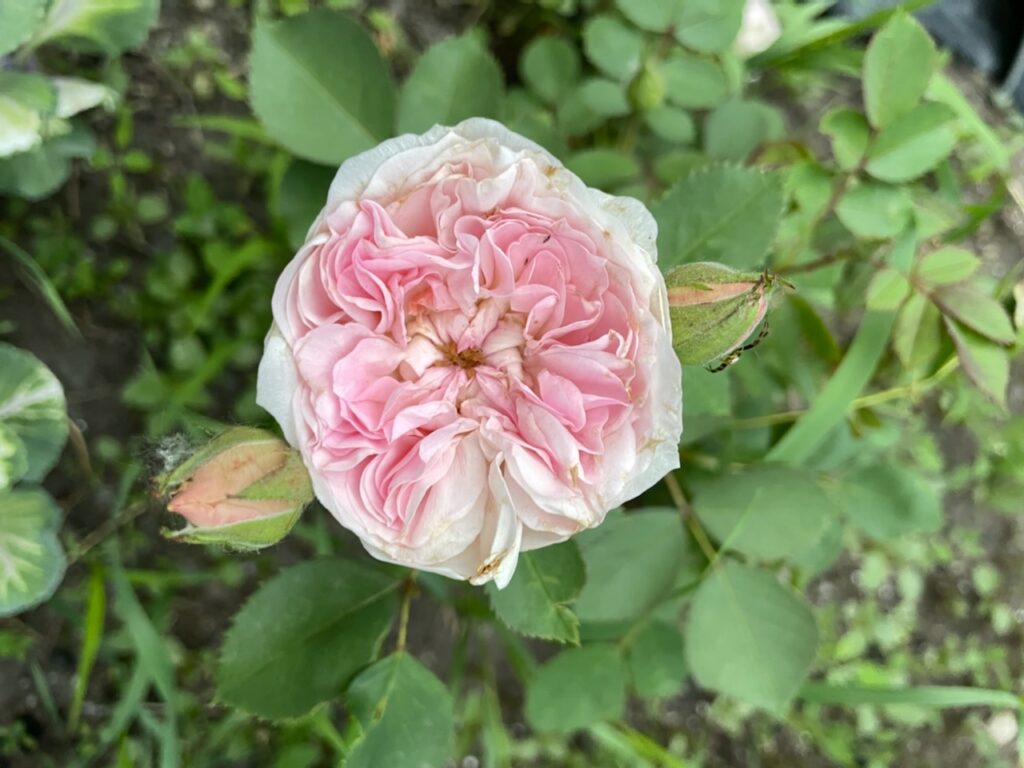
Related: 35+ Canadian Seed Companies & Nurseries to Order the Garden or Landscape of Your Dreams
Because growing roses is still new to me, I am discovering new techniques and tricks each day! I will continue adding to this post as I learn. In the meantime, if you have any rose gardening wisdom to share, please let me know in the comments!
If you liked this blog post, find me on Facebook, TikTok, and Instagram for more cold-climate vegetable gardening tips, delicious recipes, and cut flower goodness! I also make weekly videos over on my YouTube channel. I hope to see you there!
P.S. If you love the content I create for Shifting Roots, consider joining our community on Patreon. Your support means the world to me and I am grateful for each and every one of you!
READY TO GROW YOUR OWN BEAUTIFUL CUT FLOWER GARDEN WITHOUT THE HASSLE?
I’ve taken all the guesswork out of creating a cut flower garden with my e-book, Cut Flowers Made Simple. It’s the perfect way for beginner and intermediate gardeners to start their own cut flower garden with or without seed starting.
Finally, you can create a stunning cut flower garden with everything you need to make beautiful bouquets all summer long.

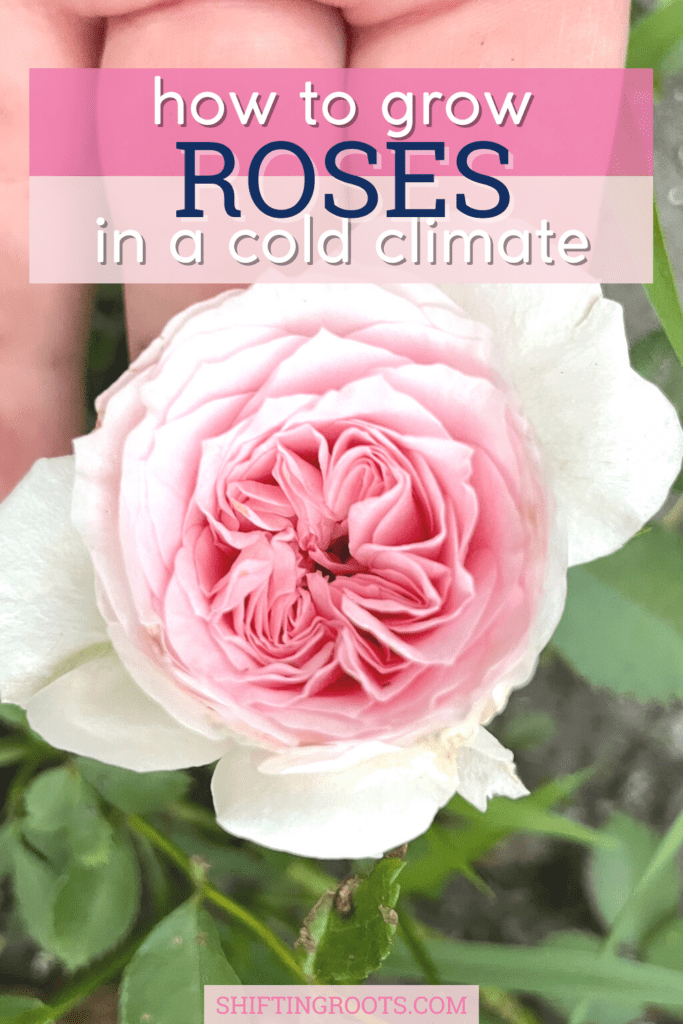
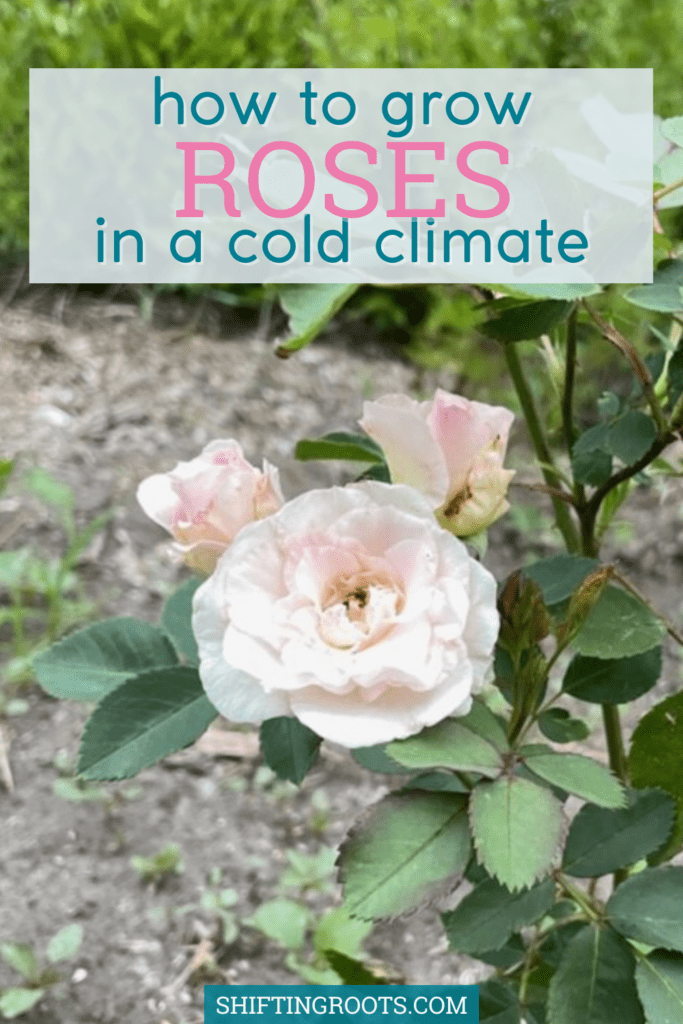
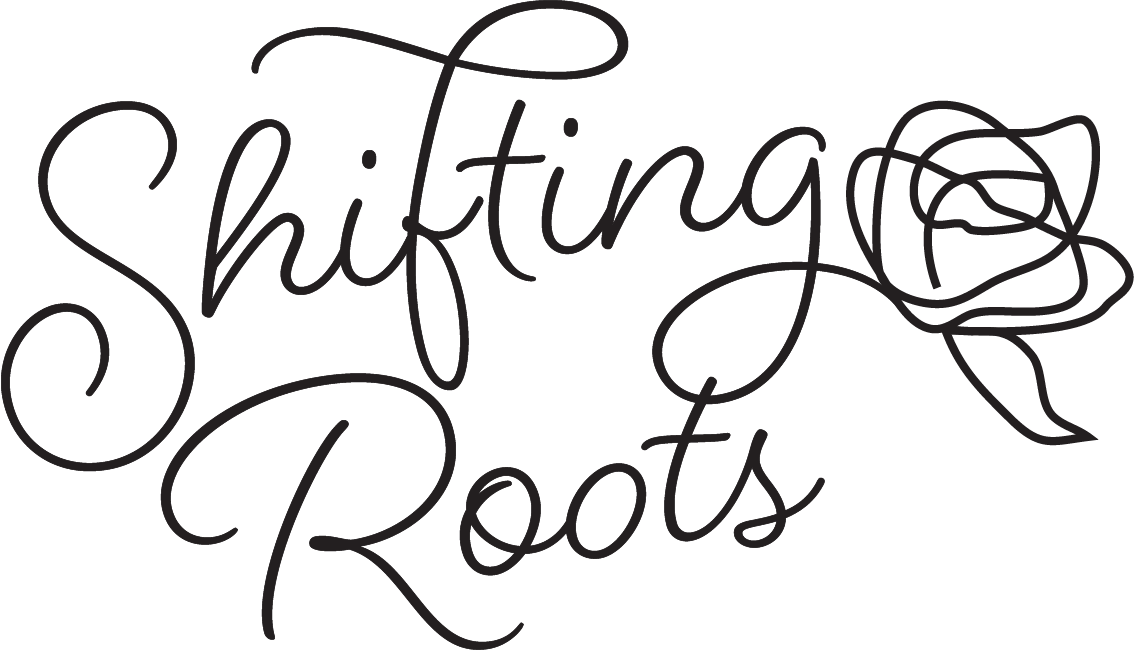
Donna